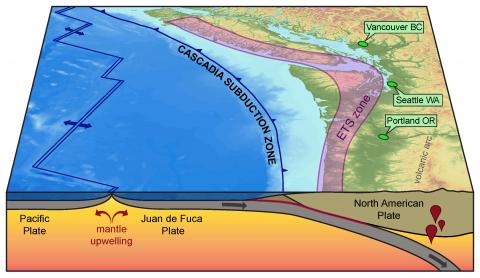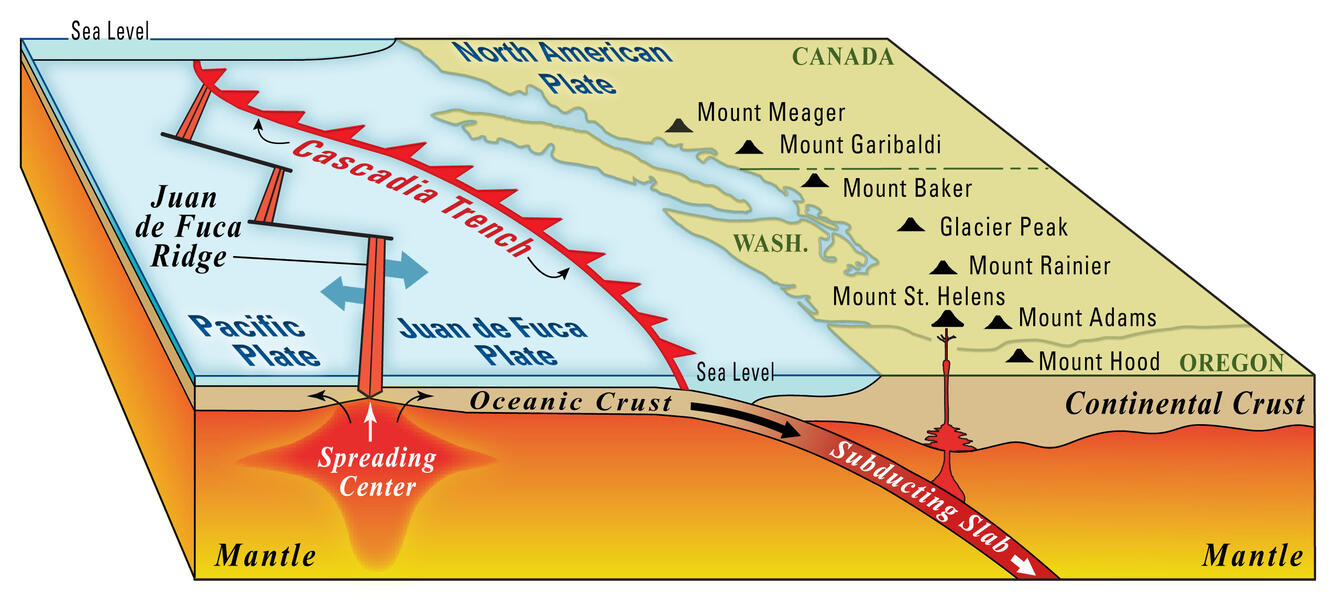Could a Massive Earthquake and Tsunami Hit the Pacific Coast?

Caption: The Cascadia Subduction Zone runs along the coasts of Northern California, Oregon, and Washington. Photo Credit USGS.gov.
It’s been over 300 years since the last major earthquake hit the Cascadia subduction zone—an area off the coast of Northern California, Oregon, and Washington. History shows that these powerful quakes happen every 200 to 800 years, which means the region could be due for another one.
A new study published in the Proceedings of the National Academy of Sciences warns that a large earthquake here could quickly trigger a dangerous tsunami. When the last one hit in 1700, parts of the coastline dropped by several feet—and something similar could happen again.
What Is the Cascadia Subduction Zone?

Caption: In subduction zones, tectonic plates press together. When they snap, it causes earthquakes and sometimes tsunamis. Photo Credit USGS.gov.
The Cascadia zone is where two tectonic plates meet. Over time, they press against each other until one slips under the other, causing a massive earthquake. That sudden movement can also displace a huge amount of water, creating a tsunami.
Researchers say the danger doesn’t end with the shaking. In as little as 15 to 20 minutes, tsunami waves could hit the coast, with flooding continuing for up to two hours.
How Bad Could It Be?
If a major earthquake hits, it could cause the land to sink and flood coastal communities. Thousands of people and properties in Oregon, Washington, and Northern California could be affected. And with sea levels rising due to climate change, the damage could be even greater in the future.
No one knows exactly when it will happen—it could be tomorrow or hundreds of years from now. But knowing the risks can help us prepare.
Earthquake and Tsunami Preparedness Tips
Here’s how to prepare now, before the next big one hits:
Build an Emergency Kit
Include:
- Water (1 gallon per person per day for at least 3 days)
- Non-perishable food
- Flashlight and batteries
- First aid kit
- Medications
- Phone charger (portable or solar)
- Important documents (copies in a waterproof folder)
Make a Family Plan
- Choose a meeting spot outside your home
- Know your local evacuation route—especially if you live in a tsunami zone
- Practice "Drop, Cover, and Hold On" drills for earthquake safety
- Teach kids how and when to call 911
Stay Informed
- Sign up for emergency alerts through your local city or state website
- Download apps like FEMA, Red Cross Emergency, or MyShake
- Follow local emergency services on social media for real-time updates
Know the Signs of a Tsunami
- Feel the ground shaking? Move inland immediately if you're near the coast.
- Water suddenly receding from the shoreline? That’s a tsunami warning.
- Don’t wait for an official alert—every minute counts.
While we can’t predict exactly when the next big quake will hit the Pacific Northwest, scientists agree it's a real possibility. Being informed and prepared can make all the difference.
Knowledge saves lives. Share this post with your friends and family—especially if they live near the coast!